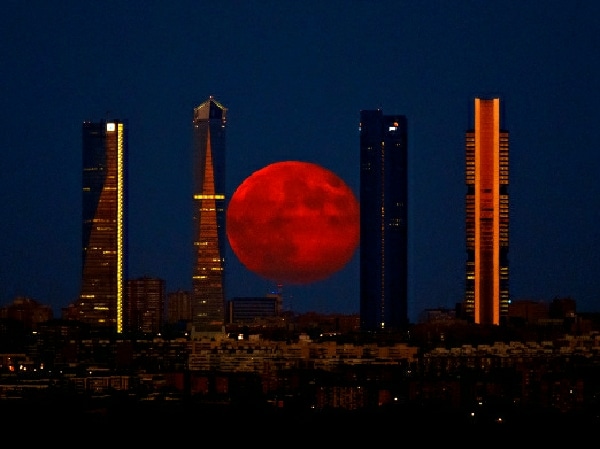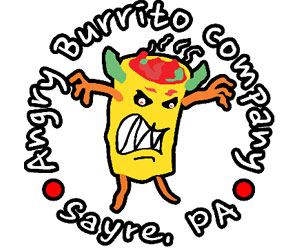A rare full moon will rise for this year’s Halloween giving trick-or-treaters an extra treat for the holiday. The Halloween full moon is also a blue moon, a spectacle that has not occurred in nearly two decades.
Halloween is shaping up much differently this year due to the coronavirus pandemic with some communities electing to cancel trick-or-treating to reduce the risk of the virus spreading from one household to another. But in neighborhoods where young masqueraders will be going door-to-door collecting candy, they will have a bright full moon to help light the way. This won’t be the typical full moon, either — it will be a blue moon.

The moon rises in the sky as seen through the Four Towers, or C.T.B.A. (Cuatro Torres Business Area) in Madrid, Spain, Monday, Aug. 11, 2014. (AP Photo/Daniel Ochoa de Olza)
Just how rare is it for a Full Moon to glow on Halloween?
The Halloween blue moon is being touted as a rare celestial event by some, leaving people to wonder how uncommon this event is compared to a typical blue moon.
“On average, the moon is full on Halloween every 19 years,” NASA said. “In fact, every Halloween full moon is also a Blue Moon.”
The last time that a full moon illuminated the sky on Halloween night was in 2001; however, clouds obscured the spooky sight for folks across the Northeast.
Contrary to its name, a blue moon does not appear blue in color. It is simply the nickname given to the second full moon in a calendar month. However, the moon can take on different colors such as orange and red when it is near the horizon, similar to how the sky can turn vibrant colors when the sun is near the horizon.
“The modern understanding of “Blue Moon” only took off in the 1980s. It was a result of a much earlier mistake printed in a 1946 issue of Sky & Telescope magazine, and since then, the term has gone viral in the media,” the Old Farmer’s Almanac explained.
The first full moon in October rose on the first of the month and was one of the most well-known full moons of the year: The Harvest Moon. The Harvest Moon is the nickname given to the full moon closest to the fall equinox and typically glows in September, but 2020 was one of the instances where it appeared in early October.
Blue moons like the one this month happen about once every two-and-a-half years, according to NASA. This irregularity is how the phrase “once in a blue moon” came to be.
Those who are superstitious may want to carry around a good luck charm on Oct. 31 and keep it handy with a Friday the 13th right around the corner in November.

















